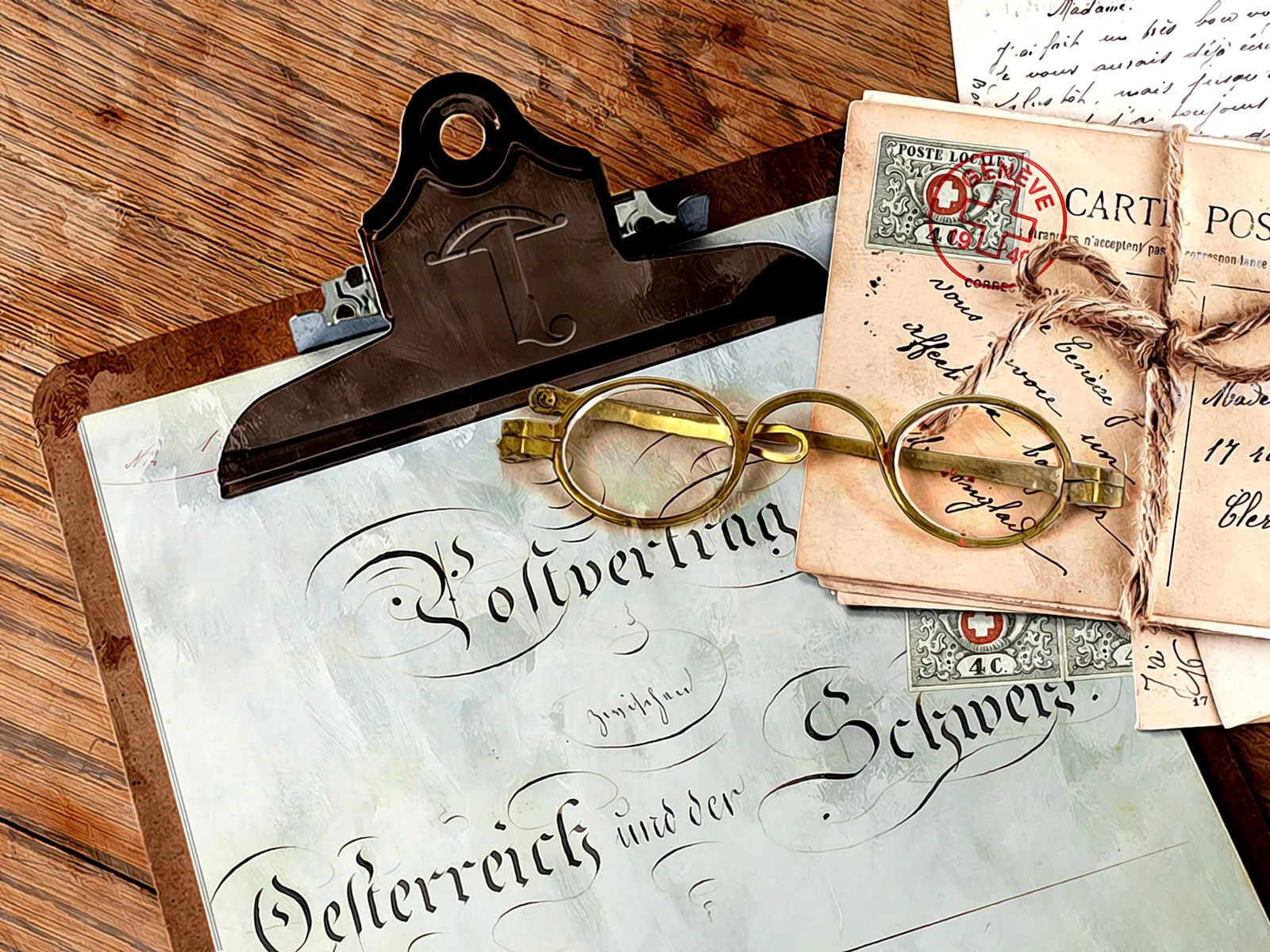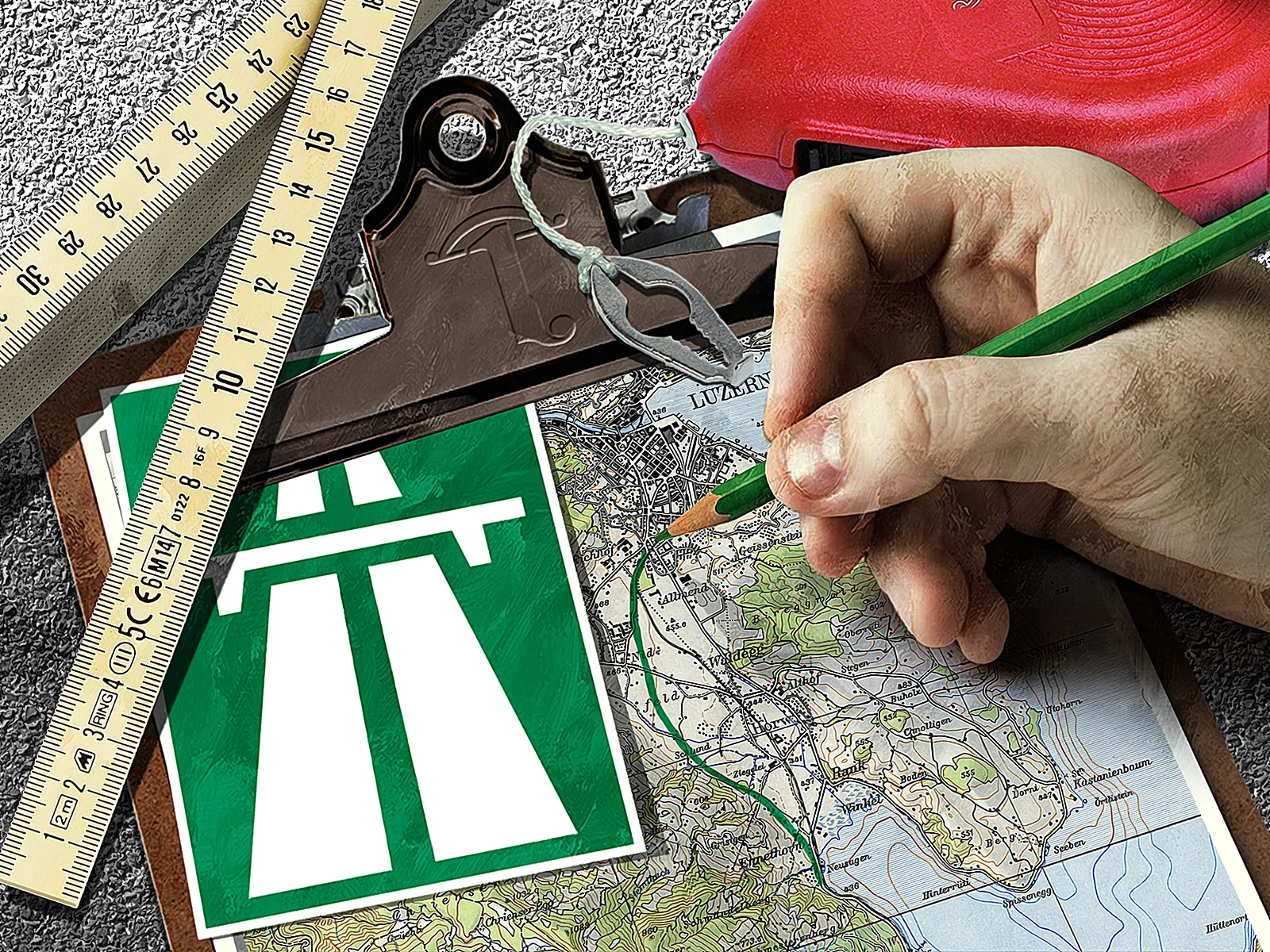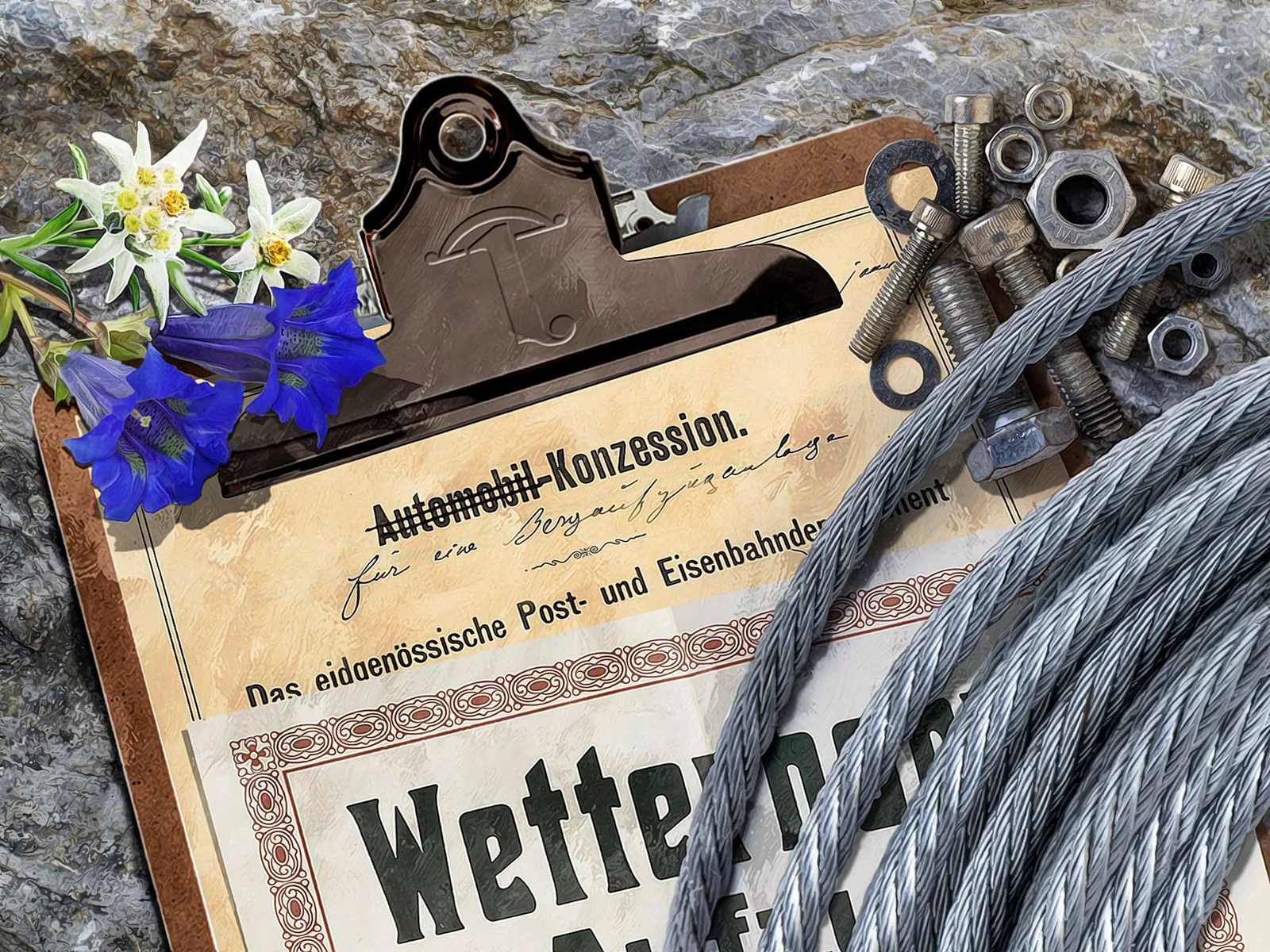
The first aerial cableway
An elevator to the 3,700-metre summit of the Wetterhorn. At the beginning of the 20th century, this was one engineer’s dream. His dream did eventually come true, even if not in its entirety: in 1908 Switzerland welcomed its first aerial cableway for passenger transport.
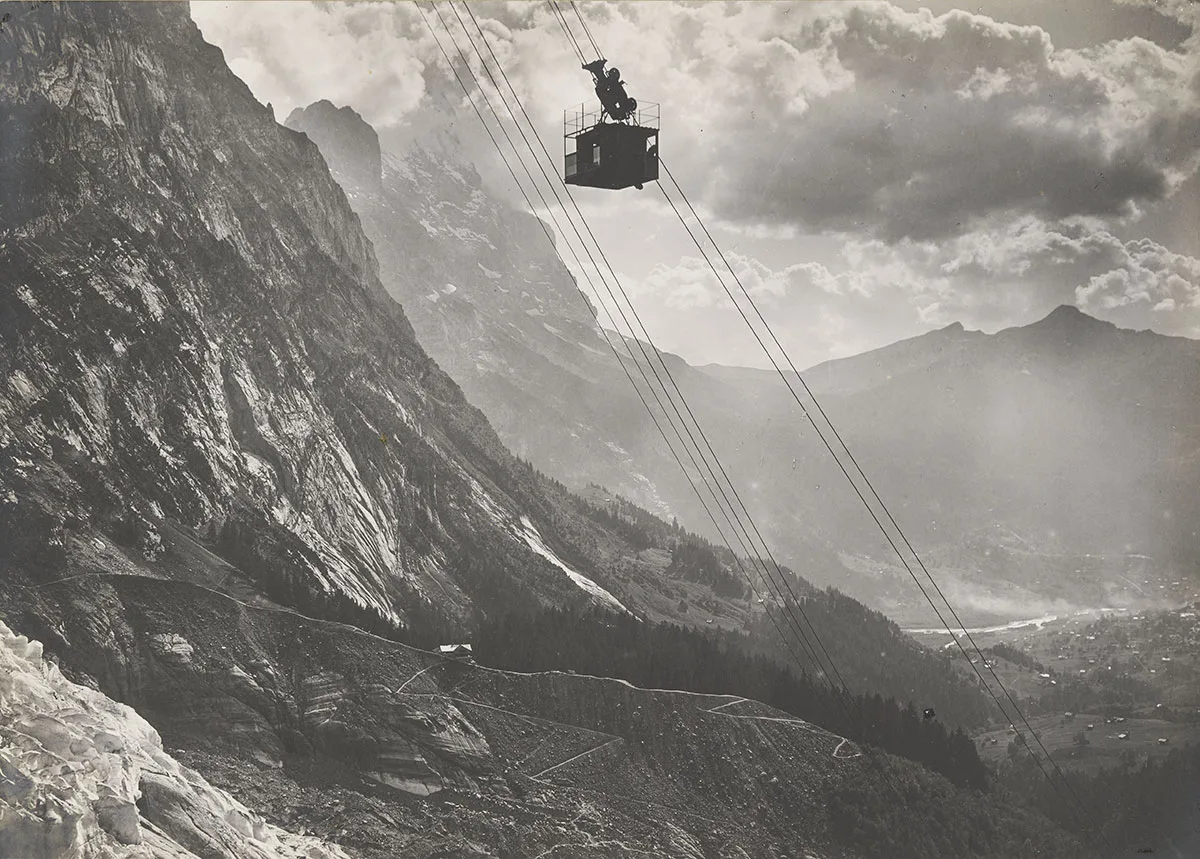
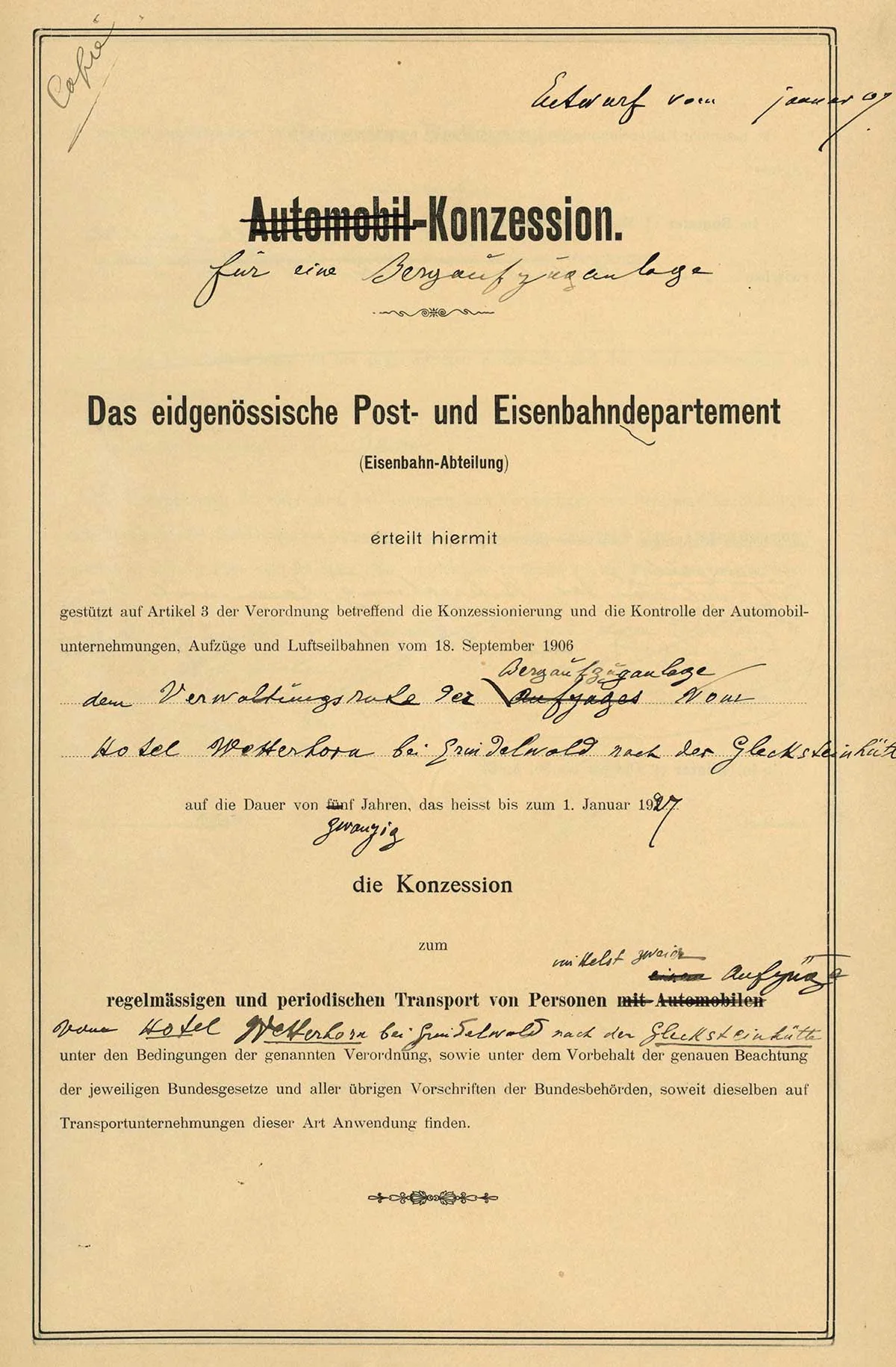
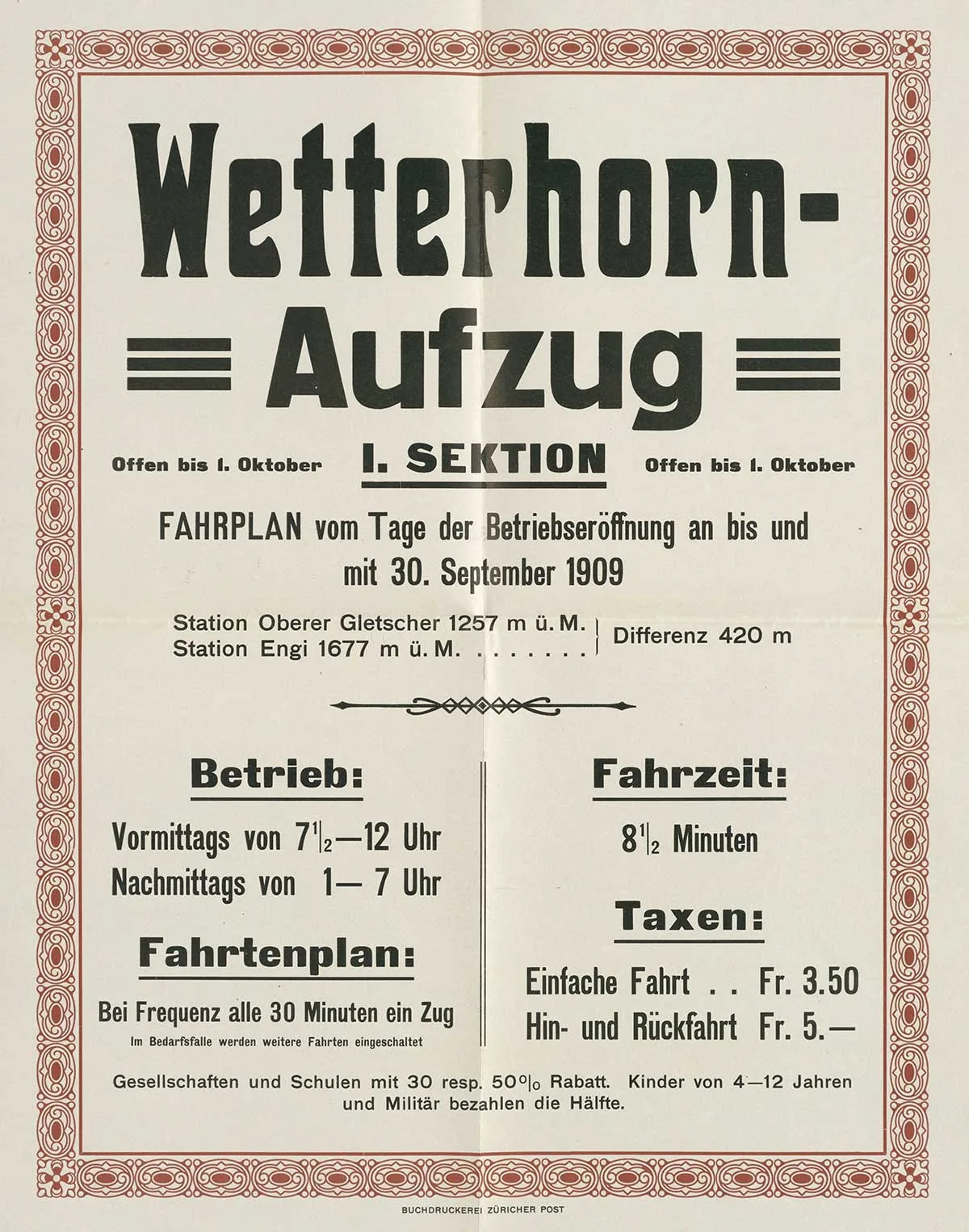
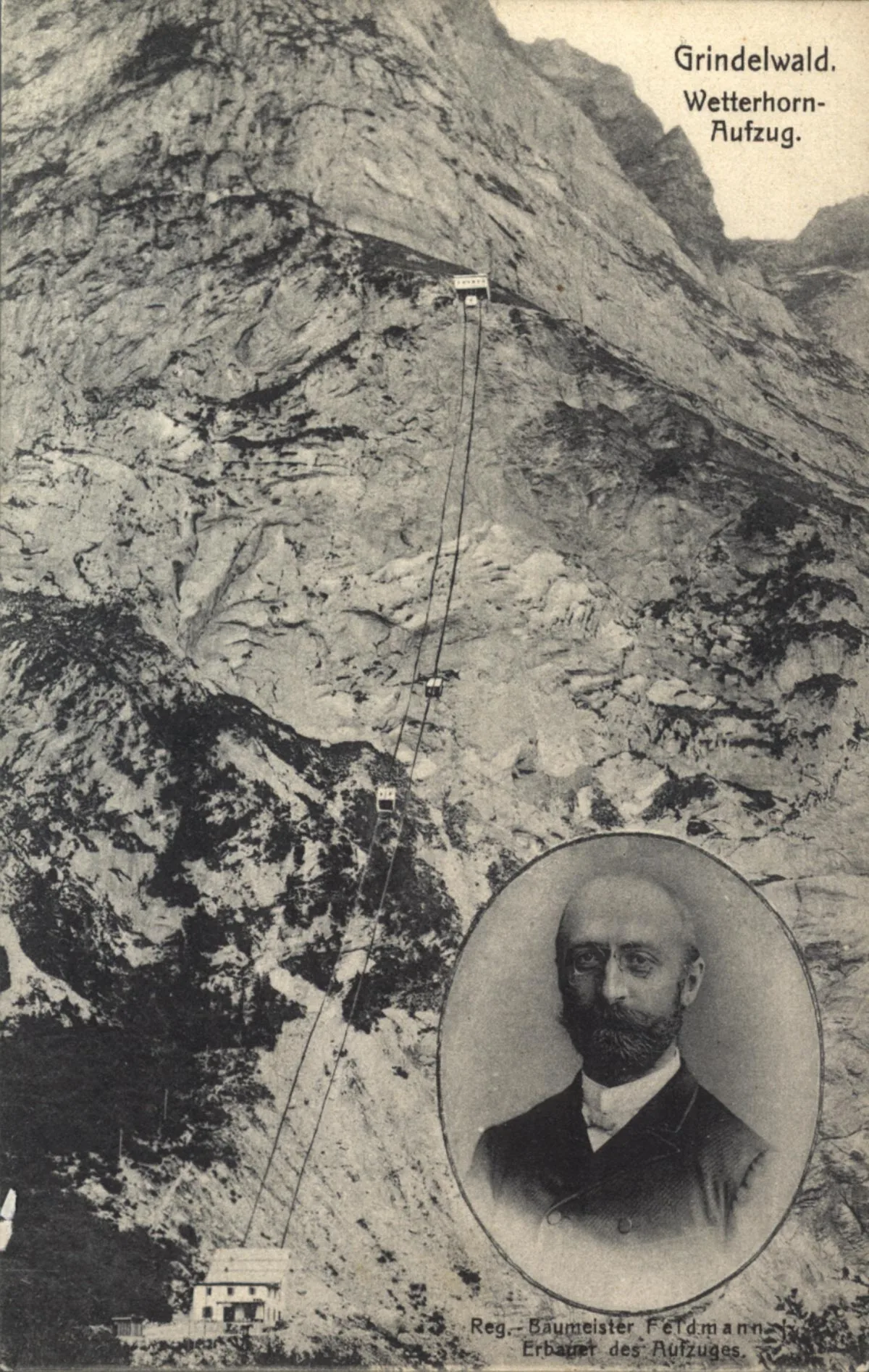
The first time…
There’s always a first time. In this series, we will be looking at historic Swiss firsts. The topics covered are very diverse: from the first zebra crossing to the first ever popular initiative. The articles have been produced in cooperation with the Schweizerisches Bundesarchiv (Swiss Federal Archives).

